Reflections on Revisionist History
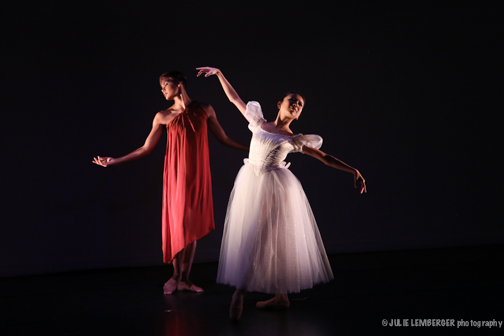

Miku Kawamura, Acée Francis Laird, and Angelique Smith in Chopin Dances
Isadora Duncan once said, “Nature is the source of the dance. The movement of the waves, of winds, of the earth is ever in the same lasting harmony.”
In watching the two dances co-exist, one can see Duncan’s waves move through the elegant, expressive port de bras of Fokine’s sylphs. Duncan’s lightness, her freedom of expression - this is the wind that flows through Fokine’s choreography to create that stirring romanticism unheard of in ballets that came before.
Where Duncan’s choreography feels of-the-moment, almost improvisatory, prompted by sensation - Fokine’s is structured just-so, to leave the impression that it’s emotionally and impulse-driven.
After this provocative mash-up, Parkerson herself performs a deliberate encore. In Revolutionary Etude, she seems to be declaring Duncan’s impact triumphant, profound, unmistakable.
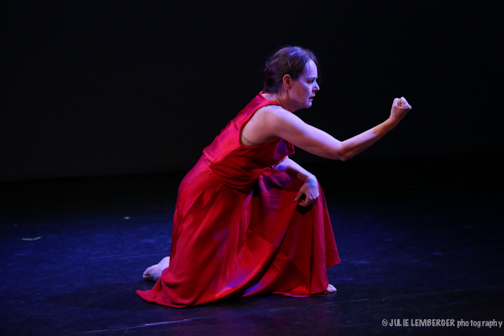

Lynn Parkerson in Revolutionary Etude
This solo was created by Duncan after the death of her children. It’s raw and powerful, passionate and severe. Wordless screams, tightly held fists and an intense gaze come as a shock after such ethereal and subtle beauty in the dance just before. But isn’t there even more freedom in power than in running with abandon? In this brief moment, Duncan is deigned just as important as the prominent and legendary male choreographers on the program.
Brooklyn Ballet’s performance of The Four Temperaments, Themes 1-3 by George Balanchine comes like an academic interlude. Here, you see the body anew. One of Balanchine’s neo-classical masterpieces, The Four Temperaments is not sentimental or narrative in the least. It is a cold but wickedly compelling abstraction of the four humors of the body: Melancholic, Sanguinic, Phlegmatic, and Choleric.

Miku Kawamura and Charles Cooper in the First Theme from The Four Temperaments
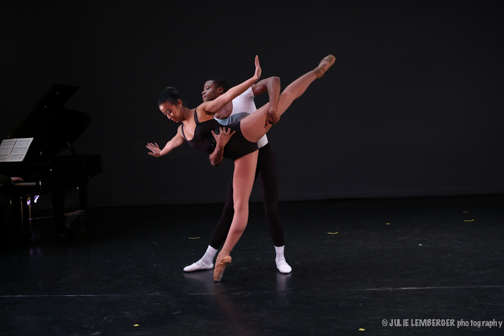
Christine Sawyer and Acée Francis Laird in the Second Theme from The Four Temperaments
In the program’s historic progression, expression has moved from the arms, the heart, the eyes and the throat to a tilt of the hips, the wrapping of a thigh, a set of turned-in knees and deep, prolonged lunges. Ballet is finding a new voice right before our eyes.
Two lithe dancers take on Merce Cunningham’s duet from Landrover next, a work of exacting precision from 1972. One can imagine Cunningham’s original idea - to perform the work in front of a projection of changing landscapes - even though a set design was never instituted in performance. It’s modern dance, but it isn’t free from ballet’s postures and poses or technical precision. Fourth position, tendue, arabesque. Still, one can sense a different texture and new relationship to the music. This is how Landrover veers from The Four Temperaments. This is how art rebels at the same time as it genuflects.

Katherine Norton-Bliss and Acée Francis Laird in Landrover
Finally, Parkerson shares two works of her own.
Pas de Deux, a duet that premiered in 2017, is a direct commentary on how forms can influence one another if simply introduced. Against a projection of expanding and contracting vertical bars, designed by visual artist Cornelia Thomsen, ballet dancer Miku Kawamura (Paunika Jones, Friday cast, is pictured) and gliding hip-hop dancer James "Floats" Fable sit back to back, undulating slowly, waking up to the other’s presence.
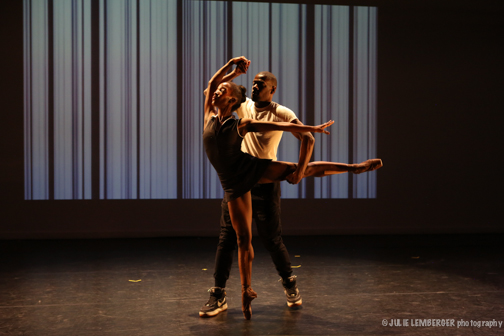
Paunika Jones and James "Floats" Fable in Pas de Deux
The dancers watch each other move with instinctive acceptance and appreciation, not curiosity. The music by Jean Phillipe Rameau, played live by pianist Julius Abrahams, supports Kawamura’s strong staccato movement as well as it does Fable’s undulating torso and sliding, swirling footwork. There’s beauty and strength in what they both do best. And when they try on each other’s movement, it isn’t awkward or cheesy - it’s lovingly performed. Fable is credited as a collaborating choreographer on the work.
Parkerson’s newest work-in-progress closes the program. Brooklyn Ballet has been creating integrated works since 2005, and their newest signature mixed-movement piece, At The Intersection was created with longtime collaborator Michael “Big Mike” Fields and joins three hip-hop dancers and eight ballet dancers. Music, a city soundscape complete with MTA announcements, is by Malcolm Parson.

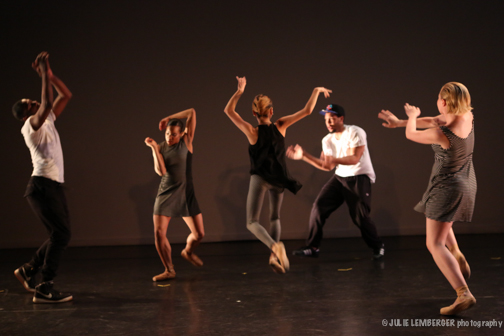
Brooklyn Ballet Company in At The Intersection
The repetition of life in the city, the routine, the exasperation of it all is apparent throughout. When the conductor says “Ladies and gentlemen, protect yourself…” it feels more ominous than looking for suspicious packages. But moments of choice, individuality and personality shine through. In a stirring, mid-dance solo, dancer Paunika Jones (Miku Kawamura, Friday cast, is pictured) rolls her wrists and ankles while prone on the floor. It feels like giving up, but the world picks her back up and moves back into a routine again before you know it.
Photos by Julie Lemberger
Amy Jacobus is a dancer turned marketing strategist for artists and entrepreneurs. You can learn more about her work at amyjacobus.marketing
In April, Brooklyn Ballet presented Revisionist History, an exuberant garden of dance to finally welcome springtime in New York.
The program, which boasted ballet, pop-and-lock and modern, among other styles, shone a spotlight on the company’s unwavering commitment to connect the dots between our past and our future as a dance community. By offering a range of diverse genres in performance, sometimes side-by-side in the same work, Artistic Director Lynn Parkerson calls on us to honor our inspirations and move forward with all the knowledge in our bones.
Revisionist History takes the audience on a journey from early modern dance to Cunningham quirk, from Balanchine to ballet-with-street-cred.
The evening began with a refashioning of historical works - Isadora Duncan’s Chopin Dances performed alongside and interspersed with movements from Michel Fokine’s famed Les Sylphides. By pairing choreography from each, Parkerson examines the obvious impressions Duncan’s work made on Fokine.

